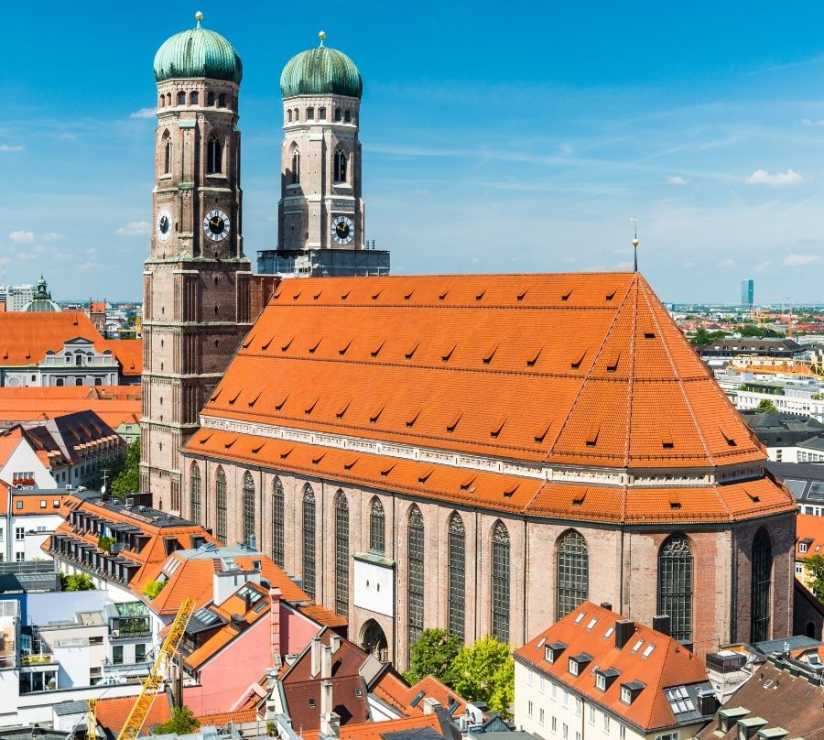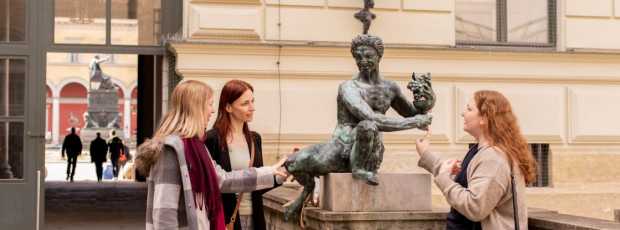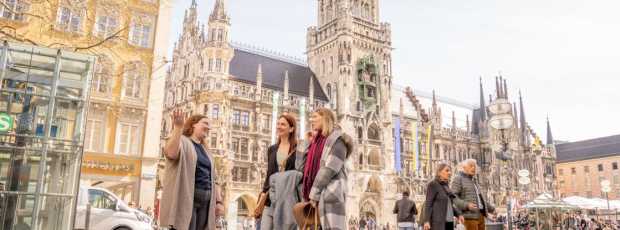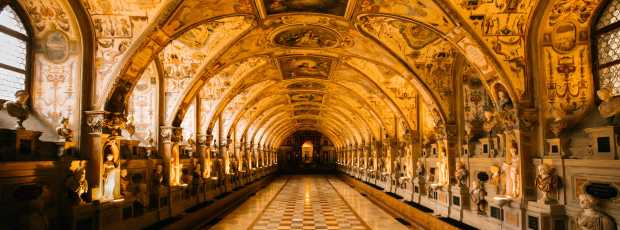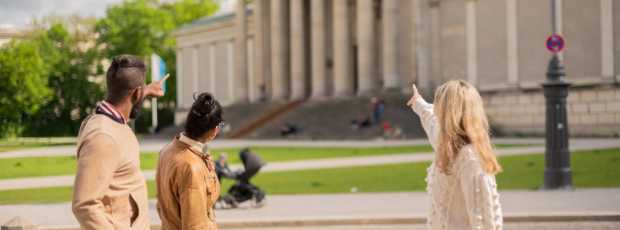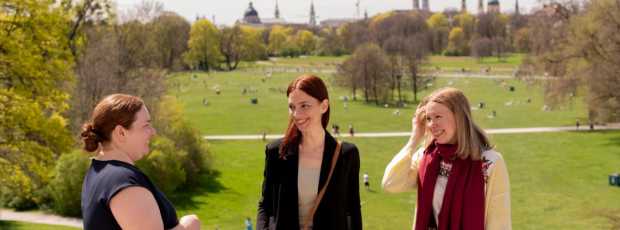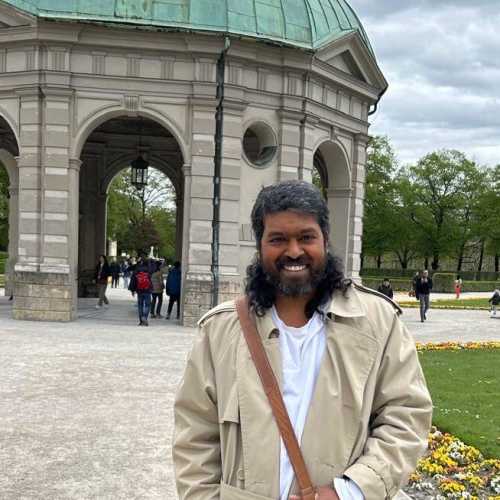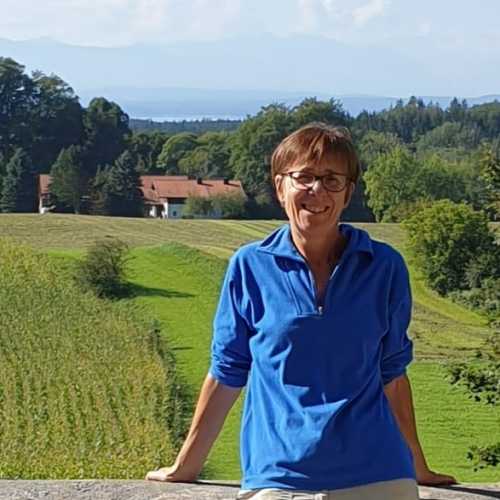Table Of Contents
- What "Best of Munich" Actually Means to Me
- Marienplatz Isn't Overrated — But You Need to Look Up
- The Beer Halls Locals Actually Drink In
- Do This Instead of Just "A Beer Tour"
- Englischer Garten Is a Cliché, But There's a Trick to It
- Nymphenburg Palace, Better Than You Think
- The View from Olympiapark's Hill Is Better Than Any Observation Deck
- Don't Skip the Dachau Memorial, But Go With Context
- My Favorite Walks Through Munich's Beautiful Neighborhoods
- A Bavarian Breakfast Isn't Fancy — It's Functional
- Why Allianz Arena Glows — Even for Non-Fans
- What the Locals Actually Eat at Viktualienmarkt
- What I Tell Friends to Do on Their First Day Here
What "Best of Munich" Actually Means to Me
I’ve lived in Munich for thirty-two years. Born here, went to school here, survived the chaos of Oktoberfest more times than I care to count.
When people ask me for the best of my city, they usually want the postcard version. The perfect Instagram shots and the cleanest beer gardens.
That’s not what I’m giving you.
![Early-morning shot of Viktualienmarkt stalls being set up. ]()
Instead, you’re getting Munich through the eyes of someone who takes the U-Bahn to work every day. Someone who knows which spots actually serve locals and which ones exist purely for tour groups.
The best includes the obvious stuff because, honestly, some tourist attractions earned their reputation. But it also includes the places I actually go when I have free time.
What I can tell you is which places are worth your time and which ones will leave you wondering why you bothered.
In my opinion, discovering the greatest experiences is never finished, there will always be new experiences and hidden gems to uncover in the future.
Marienplatz Isn't Overrated — But You Need to Look Up
Every Munich guide starts with Marienplatz, and every Munich local rolls their eyes about it.
But you should know: Marienplatz actually is one of the best experiences.
The problem isn’t the square itself. The problem is how people experience it.
![View of Neues Rathaus from below with figures visible on Glockenspiel.]()
Most visitors stand in the center, take a photo of the new town hall (Neues Rathaus), and leave. They miss the entire point.
First, look up. Actually look up. The Glockenspiel isn’t just tourist theater. Those figures tell stories about Munich’s history, including a tournament that happened in 1568. The new town hall is a prominent neo-Gothic building with an impressive tower that dominates Marienplatz.
Visitors can climb to the top floors of the new town hall’s tower for panoramic views of the whole city, seeing all the way to the Alps on clear days.
![The Glockenspiel.]()
Second, pay attention to the Altes Rathaus, the old town hall. It’s the smaller building that actually survived World War II.
Third, time your visit. Come at 11 AM or 12 PM when the Glockenspiel runs. But avoid Oktoberfest season unless you enjoy being pressed against strangers who smell like beer and bratwurst.
I still walk through Marienplatz several times a week. It’s the center of the city for good reason. The U-Bahn and S-Bahn lines all meet here, and it’s genuinely beautiful architecture.
Just don’t expect it to be quiet or peaceful. It’s a transportation hub that happens to be surrounded by impressive buildings.
The Beer Halls Locals Actually Drink In
Munich’s beer culture isn’t a tourist attraction. It’s how we live.
A Mass isn’t just a big beer. It’s a social institution. You don’t order a Mass to drink alone. You order it to share a table, start conversations, and spend an entire evening in one place.
![Wood-paneled interior with locals sharing tables and steins. ]()
Hofbräuhaus is not really where locals drink. Hofbräuhaus is a theme park version of Munich beer culture.
Augustiner-Bräu Stuttgart is where you want to go. It’s the oldest brewery in Munich, and the beer hall feels like what Hofbräuhaus probably felt like fifty years ago.
Löwenbräukeller is another good option. It’s in Maxvorstadt, so it gets university students and locals instead of tour groups.
Spaten-Franziskaner-Bräu is less well-known but produces some of Munich’s best beer. Their Weißbier is particularly good.
![A happy crowd in a large pub.]()
Here’s how beer halls actually work: You find a spot at a table, even if people are already sitting there. You order your drink and food from the server. Beer is served fresh on tap, which is a key part of the Munich beer hall experience and a tradition in Bavarian beer culture. You talk to the people around you. You stay for hours, not minutes.
Don’t order cocktails at a beer hall. Don’t ask for the WiFi password. Don’t try to pay with a credit card at traditional places.
Looking for a private city experience in Munich?
Explore the city with a local who plans a private day just for you; no groups, no scripts.
Do This Instead of Just "A Beer Tour"
Munich has hundreds of companies offering beer tours. Most of them follow the same route and tell the same jokes.
If you want to understand Munich’s beer culture, book brewery tours in Munich with a local guide instead. Small groups, real conversations, and you’ll actually learn something about brewing history.
![Small group with local guide outside traditional brewery entrance. ]()
The difference between a beer tour and a brewery experience is simple: one treats you like a tourist, the other treats you like a temporary local.
Beer tours pack twenty people into a group and hit the most obvious locations. Brewery experiences introduce you to the brewers, explain the fermentation process, and usually include beer styles you can’t find outside Bavaria.
The best beer experiences happen when you’re not trying to check items off a list.
Before booking, check brewery tour websites to see if there’s a deal or special offer available.
Englischer Garten Is a Cliché, But There's a Trick to It
Every guidebook mentions the English Garden, one of Munich's most beautiful parks. Every guidebook is right to mention it.
It’s one of the largest urban parks in the world. It’s bigger than Central Park in New York. It has beer gardens, walking paths, and the famous Eisbach surfers. The river that runs through the park offers scenic banks where you can relax and enjoy the peaceful atmosphere.
![Surfer riding the Eisbach wave.]()
The trick is knowing where to enter and what to skip.
Most tourists enter at Haus der Kunst and immediately walk toward the surfers. This is the most crowded part of the park, and you’ll spend more time looking at other tourists than enjoying nature.
Instead, enter at Kleinhesseloher See. The lake is in the northern section, and the walking paths around it are usually quieter. Exploring these quieter areas lets you find hidden spots where you can hear birds and immerse yourself in nature.
The surfers at Eisbach are genuinely impressive. They’re riding a man-made wave in the middle of the city. But you don’t need to spend more than ten minutes watching them.
The real value of the English Garden is having space to walk without navigating crowds. Munich is a dense city, and sometimes you need green space to think clearly. In winter, the park changes with snowy slopes perfect for sledding and a different kind of beauty to experience.
Nymphenburg Palace, Better Than You Think
Most people skip Nymphenburg Palace because it’s not in the city center. This is exactly why you should go.
Nymphenburg Palace was the summer residence of Bavarian rulers. It’s less crowded than central attractions, the baroque architecture is stunning, and the gardens are enormous, set within extensive palace grounds featuring lakes, canals, and wooded areas.
![Nymphenburg Palace facade reflected in canal water. ]()
The palace complex includes the main building, several smaller pavilions, and parkland that extends for kilometers. You can easily spend half a day here without feeling rushed.
The Gallery of Beauties contains portraits of Munich women commissioned by King Ludwig I. It’s unusual art collection that tells stories about 19th-century Munich society.
The Marstallmuseum houses royal carriages and sleighs, including Ludwig II’s ornate state coaches. If you’re interested in royal history, this collection is more impressive than most castle interiors.
![Ornate royal carriage in palace museum.]()
The gardens blend French formal design with English landscape style. They’re free to explore, and locals use them for jogging, walking dogs, and family picnics across the palace grounds.
Take the U1 or tram 17 to Schloss Nymphenburg. The journey takes about 30 minutes from the city center, but it’s worth the trip for a different perspective on Munich’s royal history.
What if your day in Munich was planned by someone who knows it — and you?
City Unscripted matches you with a local host who creates a private experience based on your interests, not a set route.
The View from Olympiapark's Hill Is Better Than Any Observation Deck
Munich has several places to get good views. Most of them cost money and involve elevators.
Olympiaberg in Olympic Park (also known as Olympiapark) is free, accessible by foot, and provides the best 360-degree panoramic view of Munich and the Alps. The park hosts major events throughout the year, including concerts, festivals, and cultural celebrations, making it a lively destination beyond just the views.
![Sunset over Munich from Olympiaberg. ]()
The hill was built from rubble after World War II, which gives it historical significance beyond the scenic value. It’s 60 meters high, which doesn’t sound impressive until you remember Munich is relatively flat.
From the top, you can see the BMW headquarters, the Allianz Arena, the city center, and on clear days, the Alps.
The climb takes about ten minutes at a moderate pace. There are paved paths and benches along the way.
Olympic Park itself was built for the 1972 Summer Olympics.
Unlike observation decks in towers or churches, Olympiaberg lets you stay as long as you want without time limits or crowds. Bring a book, pack a picnic, or just sit and watch the city below.
The best views don’t require tickets or reservations. Sometimes they just require a willingness to walk uphill for ten minutes.
Don't Skip the Dachau Memorial, But Go With Context
The Dachau Concentration Camp Memorial Site is thirty minutes from Munich by public transportation. It’s not part of the best in any celebratory sense, but it’s historically essential.
Dachau was the first Nazi concentration camp, opened in 1933. It served as a model for other camps and held political prisoners, Jews, Roma, Jehovah’s Witnesses, and other groups the Nazi regime targeted.
![Iron gate with "Arbeit Macht Frei" at entrance. ]()
The memorial site preserves barracks, the administration building, and other structures. It’s a sobering experience that requires emotional preparation and adequate time.
Plan for at least three hours. The museum provides context about Nazi history, the concentration camp system, and individual prisoner experiences.
Take the S2 train to Dachau station, then bus 726 to KZ-Gedenkstätte.
This isn’t a casual tourist attraction. It’s a place of remembrance and education, reflecting Germany's commitment to confronting its past and fostering ongoing education about the Holocaust.
The experience provides crucial context for understanding 20th-century German history and Munich’s role in it. The city was the birthplace of the Nazi party, and confronting this history is part of any honest examination of Munich.
My Favorite Walks Through Munich's Beautiful Neighborhoods
Munich’s neighborhoods each have distinct personalities that you miss if you only visit tourist attractions. Exploring Munich's neighborhoods on foot allows you to find their unique personalities and hidden spots.
When you walk around, the city will feel more like a small town with impressive charm.
Maxvorstadt is the university district. It’s home to both Munich universities, the Pinakothek art museums, and cafes full of students. The architecture is 19th-century, and the atmosphere is intellectual without being pretentious.
![Colorful facades and bicycles in Haidhausen.]()
Haidhausen feels like a village within the city. It’s east of the center, filled with colorful 19th-century buildings, small restaurants, and the Deutsches Museum.
The Weißenburger Platz area has some of Munich’s most beautiful residential architecture.
Schwabing was Munich’s bohemian quarter in the early 1900s. Artists like Kandinsky and writers like Thomas Mann lived here. Today it’s gentrified but still maintains some of its creative atmosphere, especially around Münchener Freiheit.
Each neighborhood rewards slow exploration rather than destination-focused tourism. Stop at cafes, observe daily life, and notice architectural details.
Maxvorstadt’s Türkenstraße has good bookstores and student-friendly restaurants. Haidhausen’s Weißenburger Straße offers quieter alternatives to downtown dining.
Schwabing’s Leopoldstraße is busier but includes interesting shops and people-watching opportunities.
![Tree-lined street in Maxvorstadt with university buildings. ]()
Walking between neighborhoods gives you a sense of Munich’s scale and diversity. The city center is compact, but the surrounding districts each offer different experiences and atmospheres.
Public transportation connects all these areas efficiently, but walking lets you see details and transitions you’d miss on the U-Bahn.
Tip
We match you with the right host, not just any guide.Want to experience the real Munich with someone who lives there?
A fully private experience, planned and led by a local host who tailors the day to you
A Bavarian Breakfast Isn't Fancy — It's Functional
Bavarian breakfast culture is practical, not Instagram-worthy. It’s designed to provide energy for physical work, not to look beautiful on social media.
Weißwurst is the iconic Bavarian breakfast sausage. It’s white, made from veal and pork, and traditionally eaten before noon. This meal offers a true taste of Bavarian tradition, letting you experience delicious local flavors.
Sweet mustard and pretzels accompany Weißwurst, along with wheat beer if you’re committed to the full experience.
Leberkäse isn’t liver and isn’t cheese. It’s a meat loaf made from finely ground pork and beef, served warm in thick slices.
![Bavarian breakfast is an interesting meal.]()
Brezen (pretzels) are serious business in Bavaria. Good pretzels have a crispy exterior, soft interior, and the right amount of salt.
Where to experience Bavarian breakfast: Weißes Bräuhaus serves traditional Weißwurst in a no-nonsense atmosphere. It’s been operating since 1540.
Café Luitpold offers a more refined version of Bavarian breakfast, with better coffee and more comfortable seating.
The best breakfast experiences connect you to local daily life rather than special occasion dining.
Why Allianz Arena Glows — Even for Non-Fans
The Allianz Arena is architecturally significant whether you care about football or not. The exterior is made of inflated ETFE plastic panels that can be illuminated in different colors.
When FC Bayern München plays at home, the arena glows red. When the German national team plays, it lights up in white. The building is essentially a giant lamp that can be seen from across the city.
![Allianz Arena lit up red at dusk. ]()
The design is by Herzog & de Meuron, the same architects who created the Bird's Nest stadium in Beijing. The Munich version opened in 2005 and has influenced stadium design worldwide.
Tours are available on non-game days and include the player's tunnel, press conference room, and premium seating areas.
The location is easily accessible by U-Bahn line 6 to Fröttmaning. The journey takes about 40 minutes from the city center.
What the Locals Actually Eat at Viktualienmarkt
Viktualienmarkt is Munich’s central food market, but most tourists use it like a museum instead of a market. Locals shop here for ingredients, not souvenirs.
The market has operated in various forms since 1807. It’s not a tourist attraction that happens to sell food, it’s a working market that happens to attract tourists.
![Fresh food stall with handwritten signs. ]()
Good purchases: Fresh produce, local cheeses, bread from traditional bakeries, and prepared foods that you can eat immediately.
Tourist traps: Overpriced souvenirs, mass-produced “Bavarian” items, and anything that’s clearly designed for people who won’t be back tomorrow to complain about quality.
The beer garden in the center of the market is legitimate. It’s run by different Munich breweries on a rotating schedule.
Locals shop at Viktualienmarkt on Saturday mornings, which makes it crowded but also more genuine. The fun atmosphere is especially noticeable then, with lively crowds, music, and the buzz of people enjoying food and conversation.
The best market experiences happen when you shop like a local: with specific purchases in mind, appreciation for quality, and respect for vendors’ time and expertise.
Ready to plan your perfect day in Munich?
Start your experienceWhat I Tell Friends to Do on Their First Day Here
When friends visit Munich for the first time, they usually want to see everything immediately. This is a mistake that leads to exhaustion and superficial experiences.
Instead, I recommend a focused approach that combines essential sights with time to understand Munich’s pace and culture.
![Friendly local guide with small group in central square.]()
Start at Marienplatz, but don’t just take photos. Sit at a cafe, watch people, and observe how Müncheners use the space. The square is a transportation hub and meeting point, not just a tourist attraction.
Walk through Viktualienmarkt, but shop for something you’ll actually eat. Buy bread for lunch, fruit for later, or cheese to take home. If you’re visiting during the warmer months, head to one of the open-air beer gardens nearby for a classic Munich experience.
Visit one beer hall or beer garden, but stay for at least an hour. Order a Mass, share a table, and engage with the social aspects of Munich beer culture.
![Viktualienmarkt and its interesting attractions.]()
Choose one museum or attraction based on your genuine interests rather than trying to check items off a list. For a world-class cultural experience, head to the Bavarian State Opera at the National Theater—one of Germany’s premier opera venues.
End the day with a walk through one neighborhood beyond the city center. Maxvorstadt, Haidhausen, or Schwabing each offer different perspectives on Munich life.
If you want guided Munich experiences that go beyond typical tourist routes, book with locals who can provide context and answer questions specific to your interests.
The best first-day experiences create a foundation for deeper exploration rather than trying to accomplish everything at once.
Munich rewards patience and attention more than speed and efficiency. Take time to appreciate what you’re seeing, and you’ll understand why locals choose to live here despite the high cost of living.
What if your day in Munich was planned by someone who knows it — and you?
City Unscripted matches you with a local host who creates a private experience based on your interests, not a set route.
Want to experience the real Munich with someone who lives there?
A fully private experience, planned and led by a local host who tailors the day to you
